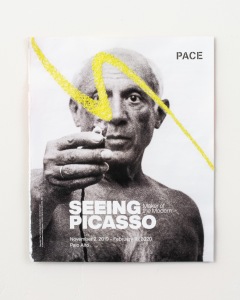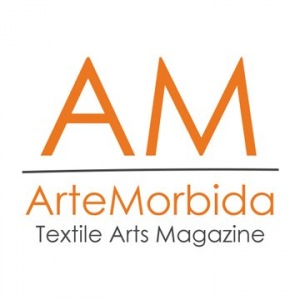
Beyond Definitions: The Works of Julia Couzens
Interview with Maria Rosaria Roseo
Julia Couzens was born and grew up in Auburn, California, she received her MFA in 1990 from UC Davis, and currently lives and works between Merritt Island, on the Sacramento River, and Los Angeles. After starting out as a painter, she dedicated herself to drawing for several years, until she turned towards sculpture and working with fibers, creating works that are born from the union of drawing, painting, sculpture and craftsmanship, abstract compositions, suspended, twisted and interwoven forms that convey tension, constriction and strong energy, works that are born from the synergy between the artist’s senses and the material in a process of transformative interaction. Couzens’ works give voice to materials, give worth to their characteristics and potential, rejecting any value judgement because, as she herself states: “The artist’s role is to find the voice of any given material and make that voice speak”.
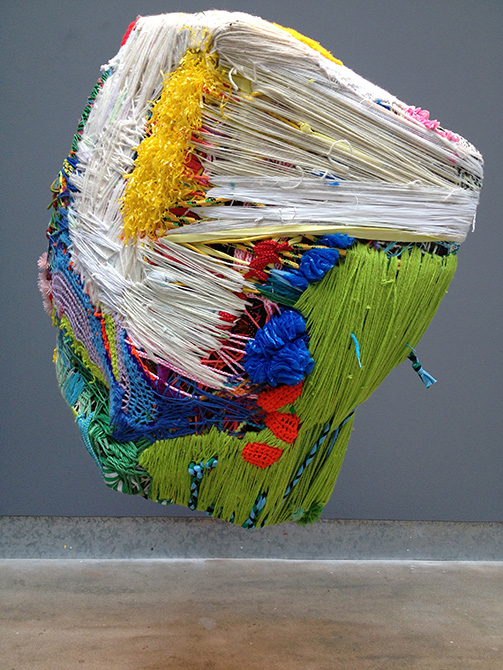
You began your artistic career as a painter. How and why did you approach sculpture using the textile medium as the main element of your artistic practice?
The nature and form of my work has continually evolved. I consider color, shape, composition, and gesture to such an extent that I suppose you could say that painting is the basis for all the above. But my process is plastic, grubby and fluid. I seem to work against formal definitions. I know I don’t need to name something as “painting” or “sculpture”.
For me it’s more interesting to take the face off those definitions to explore and tease apart particular qualities or substances that rise to the surface and become urgent while working. Thread is arguably a dimensional line and wire grids a sort of rigid, open-weave canvas. It’s critical that I work within a context of possibilities and questions, of not knowing all that the work is about or even what it is.
Not only artist, but also author of essays for art catalogs. How has this experience affected your way of looking at art?
Because I am first and foremost an artist, writing about the work of other artists adds another layer to how I consider my own work. On some level I must have empathy, a visceral connection with the work I write about, for me to write myself into an understanding of it. Language is secondary to the visual. First the work, then the words. But the running ticker tape of language braids my thoughts together, creating an apparatus and way for me to grapple with the work’s significance as well
as my own work.
How can the works you presented in the exhibition Assembled be read? What is it that prevails, the aesthetic intention or the expressive impulse and the authenticity of a natural and instinctive narration?
Assembled exhibited a body of work I call “Little Stubby Bundles,” which was created in a particular time and place. These small sculptures or thick little paintings are composed of bound and layered textile fragments and scraps. They are residue of my improvised search for signs of sensory life, of little journeys that I take with each individual piece. The grid was my organizational substrate, but acute watching for the relationships between how I manipulate the material and the sensate feelings these relationships trigger is how I recognize that life. I guess, too, I am shining a light on very small work, which can have a particular focused intensity, becoming little universes all their own. In this era of global bombast, working small is kind of radical, not that I am deliberately seeking that.
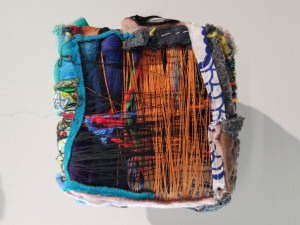
In your works, in your installations, what is the relationship between the object and the space it inhabits?
Installations in which work is attached to its surrounding space can alter and expand the meaning of that space. Installations are also frequently ephemeral, meant to be experienced outside the singular frame of object, and go beyond something that is concrete. I’m not an installation artist per se, but I have installed wall-spanning exhibitions of drawings and sculpture. Last Words, a gallery-wide textile installation, wrapped the walls with stitched blankets, tulle, and suspensions of wire and papier mache text in a continuous loop that could be engaged at any point. The idea of entering an immersive artwork, of being surrounded and embraced by it like a metaphorical blanket was
partly the point of the installation. Ironically, the viewer encountered the project’s ephemeral words in a gallery housed within a university library where presumably some last words are permanently stored.
Textile Tags. A series of provocative, critical, almost irreverent collages that alter and modify the original advertising messages, transforming them, through needle and thread, into something else. Into what? And why?
The Textile Tags were initially created in a moment of pique when I noticed the blatant gender bias of gallery advertisements almost exclusively promoting male artists. This bias was evident even in 2018 when I made my first tag! Instead of scribbling over with spray paint in the street manner of graffiti taggers, I used the so-called traditionally feminine tools of needle, thread, and stitchery crafts to cross-out or cancel the male names. The project began in annoyed defiance. Over time, however, the project has grown in scope and tone, with each collage made in response to the specific ad. Sometimes the image on a magazine cover or ad is “cancelled” and sometimes I collaborate with it. My studio practice deploys different speeds depending on my time, energy, and frame of mind.
Working in response to a pre-existing image, without having to reinvent the wheel, is liberating. It’s a way to keep my pilot light on and moving forward when, for whatever reason, I’m not able to attend to more rigorous studio work.
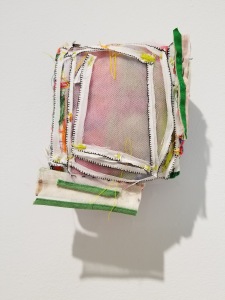
Your sculptures, almost without form, seem to want the materials to speak, poor, ‘anti-artistic’ materials (waste fabrics, pipe cleaners, etc.). Can they be interpreted as an awareness of the expressive possibilities inherent in matter?
This is a great question, and my answer may circle back to your first. To the extent my work exists on a formal spectrum toggling back and forth between painting and sculpture, I deploy materials with the same disinterest in naming or categorizing. I aim to see things for what they are, without pre-existing cultural judgements of value. Consumer culture puts the quest for more and newer things over deeper experiential and spiritual connections. Either everything has value, or nothing does. Why should a line constructed from ink have more value than line constructed from thread? Or colors made by mixing paint be more precious than those made by layering tulle? The artist’s role is to find the voice of any given material and make that voice speak. Costly pigment can cover yards of canvas yet remain mute and inert. Twists of woven pipe cleaners can dance across a wall and sing!
What are you working on right now? Are there any themes, objectives that you feel the need to develop or deepen in the continuation of your artistic career?
As a result of the Textile Tags, I remain intrigued with collage. But instead of working with a pre-existing image, I’m interested in creating photo-based prints and layering up from there. Otherwise, I continue to make speculative assemblages, ruminating on the expressive character of materiality, feminist critique, cognitive uncertainty, and seek enchantment in this difficult world.
